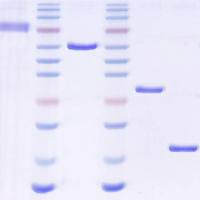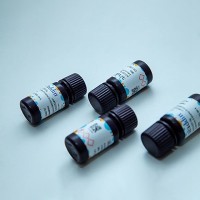Measurement of Activities of Cyclobutane-Pyrimidine-Dimer and (6-4)-Photoproduct Photolyases
互联网
923
The adverse biological consequences of unrepaired toxic UV-B-induced photoproducts in DNA, mostly cyclobutane pyrimidine dimers (CPDs) and pyrimidine-(6-4′)-pyrimidone photoproducts [(6-4) photoproducts; (6-4)PPs], are touched on in Chapters 4 , 15 , and 18 . Enzymes that use UV-A/blue-light energy to reverse CPDs [CPD-photolyases (PLs)] have been found in a wide variety of organisms, from bacteria to marsupials (1 ). In plants, enzymatic photoreactivation appears to be the predominant mechanism for repair of CPDs (2 ). Recently, photolyases specific for (6-4)PPs have been identified in insects (3 ), amphibians (4 ), snakes (4 ), and plants (5 ). It is often of interest to determine levels of photolyase activities quantitatively in cells in which it is difficult to assay in vivo repair of endogenous DNA. For example, in unfertilized eggs of amphibians, there is only a single genome, but a 105 -fold excess (relative to somatic cells) of ribosomes and proteins (6 ). If photolyase activities in extracts of such cells are to be compared, using assays based on exogenous photoproduct-containing substrates, it is necessary to achieve:
| 1. |
Photoproduct specificity.
|
| 2. |
Sensitivity to activities at low levels.
|
| 3. |
Linearity over a large activity range.
|
| 4. |
Resistance to interference from endogenous DNase activities in extracts, which may vary greatly from species to species.
|




![BioSIM 人 ollistatin fragment dimer Fc 融合蛋白 (依米特安α),生物类似药,科研用途 [ CAS: 644543-31-6] 1mg](https://img1.dxycdn.com/p/s14/2025/1109/337/8404950979567947891.jpg!wh200)



